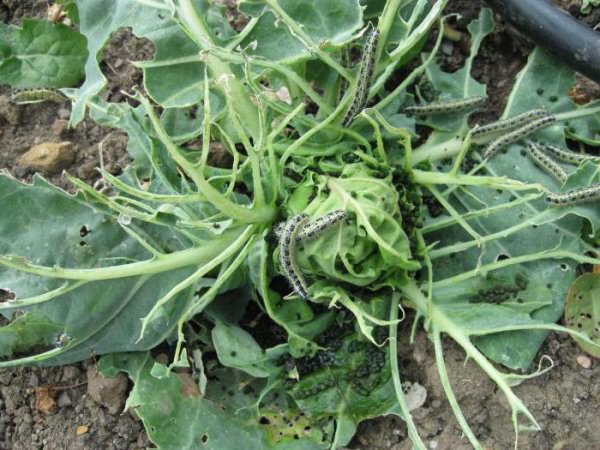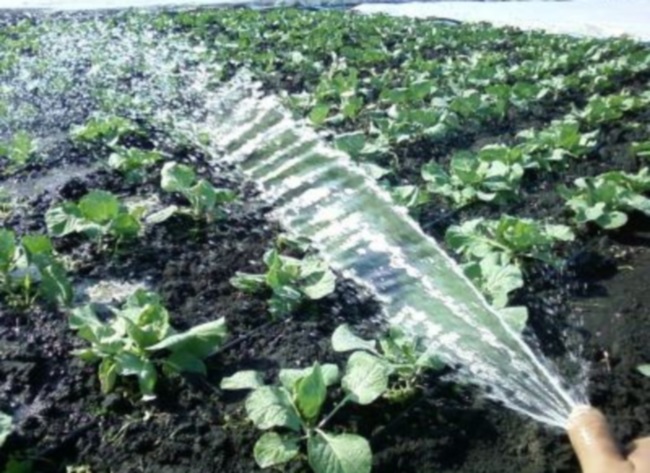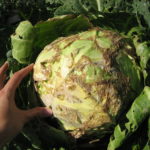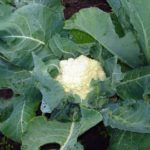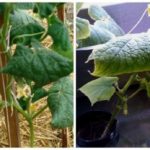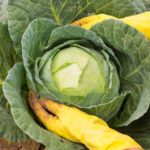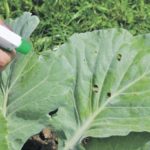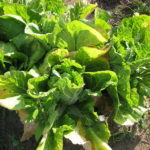Cabbage is a plant that requires special care from a person. Quite often she is exposed to various diseases. The most common include black leg, late blight, powdery mildew, gray and white rot. Gardeners also often encounter the problem of leaves curling. To get rid of this problem, you need to figure out why cabbage leaves curl.
Causes
Most often, this problem occurs in young seedlings. There are several main reasons for curling cabbage leaves:
- Lack of nutrients;
- Some gardeners prepare the soil for seedlings incorrectly and because of this, the plant lacks nutrients.
Lack of phosphorus often leads to curling. This phenomenon may appear immediately after cabbage is planted in its permanent growing location. Also, the leaves become curly due to a lack of potassium. You can get rid of this using wood ash. It must be added under the base of the cabbage.
Lack of microelements
Sheets can curl due to a lack or excess of zinc, sulfur, copper and boron.
With a lack of boron, the leaves on cabbage begin to curl and lighten. In some cases they turn red-purple.
The youngest leaves are the first to feel a copper deficiency. They immediately begin to curl. If preparations that contain copper are not added to the soil in a timely manner, the cabbage will begin to turn yellow and dry out. It is best to use mixtures containing sulfur and copper, as they increase each other's effectiveness.
A large amount of zinc affects old leaves. They curl and become more fragile. With a lack of calcium, they not only spin, but also turn very white.
Excess of mineral fertilizers
During overfeeding with nitrogen-containing fertilizers, the leaves begin to curl into a ring. At the same time, their plate becomes very dark and brittle. Due to the large amount of nitrogen, the supply of phosphorus is blocked. To correct this problem, you need to use phosphorus-potassium fertilizers, which should be added to the soil during irrigation.
Heat
At air temperatures above +30 °C, the leaves begin to curl inward. When it gets a little cooler outside or indoors, they return to their normal shape.In order for the plant to better tolerate high temperatures, you need to spray it with microfertilizers or a solution of potassium permanganate.
Lack or excess moisture
Lack of moisture occurs at high temperatures and low air humidity.
Because of this, the leaf falls down and curls into a tube. With excess moisture they become very brittle and rise to the top.
Aphid attack
Some people do not immediately understand why cabbage leaves curl. Quite often this happens due to aphids. This insect causes enormous damage to the plant. It sucks all the cabbage juice out of it, which is why the leaves begin to become covered with white spots. Over time, cabbage growth slows down and it dies. Therefore, it is necessary to fight aphids immediately after their appearance.
Whitefly attack
This white midge, which is very similar to a small moth, often attacks cabbage. She lays her larvae on the leaves, which feed on the sap of the plant.
After some time, this causes the cabbage leaves to curl. If you do not get rid of the whitefly in time, the cabbage will dry out.
Prevention
Many novice gardeners do not know what to do if the leaves curl. To return them to their previous shape, it is necessary to properly care for the plant during cultivation.
Watering
Need to know, how to water cabbage correctlyso that the sheets do not curl due to lack or excess moisture. It is recommended to water only in the evening 1-2 times a week. In summer, cabbage is watered every two days. To preserve moisture, a mulching peat layer of 5-7 cm is made on the soil surface.
Top dressing
Proper fertilizing will help maintain the optimal amount of nutrients and microelements in the soil.The plant needs to be fed 15-20 days after planting. During the growth of cabbage, the procedure is carried out three times:
- First feeding. To create a mixture, 2 g of saltpeter, 5 g of superphosphate and 2 g of potassium fertilizer are mixed with a liter of water. This is enough to fertilize 30-50 bushes.
- Second feeding. It is carried out a week after the first. When creating the solution, a liter of mullein and bird droppings is mixed with 10 liters of water. No more than one liter of mixture is consumed per bush.
- Third feeding. Held in early June or late May. When preparing the solution, a tablespoon of potassium sulfate and superphosphate is mixed with 10 liters of water. A square meter of area should be treated with 3-5 liters of the mixture.
Treatment
You can protect cabbage from diseases and pests that cause the leaves to curl with proper processing. Immediately after planting the plant, you need to add tobacco dust and ash to the ground. This will protect it from fleas and slugs.
We fight aphids using a solution of tomato tops: add 3 kg of tops to a five-liter pan with water. The mixture is boiled and infused for about three hours. After this, it is filtered and diluted with cold water.
The plant can also be sprayed with a solution of onion peels. To prepare it, add boiled water to a liter jar of husks and leave it for several days. After this, another three liters of water are added to the mixture.
You can fight harmful insects with the help of herbs: sage, mint, rosemary, cilantro. They need to be planted near cabbage.
Conclusion
Cabbage leaves curling is a fairly common problem that is not that difficult to get rid of. To do this, it is enough to properly care for the plant and know how to treat it.

